- Home
- Keith Douglass
Alpha Strike c-8 Page 4
Alpha Strike c-8 Read online
Page 4
“Yes, Admiral. The AWG-9 just got a couple of hits on it, barely enough to paint a trace. Whatever it was — if both paints were even the same target — it was going like a bat out of hell. Then again, it could have just been two clots of sea clutter that happened to pop up one right after the other.” She shook her head. “I can’t give you a solid answer, sir. I’m sorry.”
“What’s your gut feeling about the contact?” Tombstone pressed. “You’ve got good eyes, Tomboy. You were trained by the best, after all.”
A smile flashed across her face, quickly replaced by the more serious look of a professional naval aviator called on to make a decision. Too often in the intricate game of radar detection and classification the final call on whether a contact was hostile or not depended on the judgment of the officer on the scene.
Tombstone had good reason to trust Tomboy’s judgment. During her first cruise, she’d been his RIO on countless occasions when he was CAG of Air Wing 14. Despite her markedly female appearance on the ground, Tomboy was a hard-line, top-notch RIO in the air. “My gut says it was a missile, Admiral,” she said in a clipped, incisive voice. “My radar painted something that looked like skin. It looked solid, and it looked like the same contact on both sweeps. I’d call it an actual contact, not a ghost. And there’s supporting information for that as well.”
“A Chinese outpost getting blown out of the water a few minutes later is pretty solid correlation,” the Admiral agreed. “What worries me is the lack of detection on a launching platform.”
“Do the Chinese have anything like our Stealth program, Admiral?” Gator asked. “That could be one possibility. An aircraft that we didn’t detect launched a missile.”
“Several of the intelligence officers have suggested that possibility,” Tombstone acknowledged. “There are a couple of problems with that explanation, though.
“First, if the missile had been air-launched, it would probably have been from a reasonable altitude. We’d have had a better detection on the missile, if not the aircraft. We know it’s not a stealth missile because you two did get a couple of hits on it. From the sounds of the contact, the reason for the intermittent detection was low altitude, not stealth technology.
“Second, a non-stealth missile on a stealth aircraft would destroy the low radar profile of the aircraft. Third, if it were air-launched, we’d probably have seen a seeker head of some sort,” he said, referring to the normal terminal guidance method of most air-launched missiles. “And finally, there’s no evidence that China has made much progress on a stealth program. They’re still buying fighter aircraft from the Russians, and Russia’s not about to sell their nearest regional threat their latest in advanced technology.”
“So it had to be launched from something else,” Bird Dog said thoughtfully. “A submarine, maybe. Or it could be a Chinese version of our Tomahawk missile.”
“Those are also possibilities, but they require us to make some assumptions about their technology. According to our intell, the Chinese don’t have a long-range land-launch strike missile, nor do their subs carry one. Remember, the Chinese navy is still strictly a brown-water force, not a blue-water like ours.”
Tomboy shrugged. “Well, whatever it is that they don’t have, it sure made a hell of an explosion out there.”
Tombstone questioned the four aviators for a few more minutes. Finally, convinced that they knew nothing else about the incident, he dismissed them. His eyes followed Tomboy as the aviators left the debriefing room. The baggy flight suit was pulled taut across her upper back and fell into loose folds around her hips, concealing her figure. From what he remembered of their last liberty together, that was a damned shame. A trickle of pure lust ran through his body, making him uncomfortable because of the sheer incongruity of feeling it while looking at a RIO in a flight suit. Still, despite her call sign, Tomboy was nothing if not completely female.
“That pilot — he sounds just like Batman did at that age,” Tombstone said reflectively.
CAG chuckled. “I see it, too. How’d you ever get him to quit playing hotshot with those Soviet Bears?”
“I didn’t — not really. He’d still be at it if he were out here.”
Batman, known more formally as Captain Edward Everett Wayne, was a Top Gun-trained F-14 pilot. He’d joined the VF-95 Vipers as a lieutenant nugget when then-Lieutenant Commander Tombstone Magruder was on his second — or was it third? — cruise. He’d been hardheaded and impulsive, and had almost gotten himself in serious trouble hot-dogging with a Soviet Bear reconnaissance aircraft. Later, once it hit home with him that he was killing men along with aircraft in the sky, he’d started to doubt his ability in combat. Tombstone had served as his sounding board.
In subsequent cruises, Batman and Tombstone had seen combat in Norway and Pakistan. The hotheaded young pilot had grown into one of the most superbly proficient aviators Tombstone knew.
Now Batman was flying something new, a platform that was forcing him to grow in new and not entirely pleasant ways: a desk in the Pentagon. Tombstone had read recently that Batman was heading up the development on JAST, the Joint Aviation Strike Technology program.
“What about these explosions? Washington’s not going to be happy if we don’t have some response planned,” Tombstone said to Captain Cervantes, his CAG.
The title of CAG was a holdover from the days when a Carrier Airwing was called a Carrier Air Group, and was commanded by a Commander. These days, CAG was a full Navy Captain and the position carried considerably more power — as well as seniority — than the Air Group commander had. But the old handle was so firmly embedded in carrier aviation culture that Tombstone doubted it would ever disappear. Besides, CAG was a hell of a lot better acronym than CAW.
His current CAG, Captain Peter Cervantes, was an F-14 driver like Tombstone. They’d known of each other for years, although they had always seemed to be assigned to different coasts and had never worked together. CAG’s reputation within the tight-knit fighter community was golden, though.
“Until we know what that strike was, I’d consider us in harm’s way out here. And if they have a little cruise missile surprise to worry the surface ships, it makes me wonder what they’ve got cooked up for us that we don’t know about,” CAG said.
“My thoughts exactly. Stingers I’m not that worried about. But what if there’s something else?”
“We can start by shifting more of the surveillance patrols to the F-18 squadrons, and keeping an E-2C up around the clock. Let’s use what we’ve got.”
“Tomcats aren’t going to like that,” Tombstone said thoughtfully.
“They’ll have to live with it. In this particular scenario, the Hornet’s the best bet. I hate admitting it as much as you do. An AWACS would be even better,” CAG replied.
AWACS, short for Airborne Warning and Control System, was military slang for the E-3 Sentry surveillance aircraft. A modified Boeing 707, it carried extensive mission avionics packages for long-range targeting information and identification. The 11,800-pound rotodome measured thirty feet in diameter, and was mounted on two struts on top of the aircraft. Its AN/APY-2 slotted, phased-array antenna and APX103 IFF interrogator provided excellent coverage of large areas of ocean. But it had two fatal drawbacks, as far as Tombstone was concerned — it was owned by the Air Force, and it couldn’t be deployed from an aircraft carrier.
“The odds of us getting one aren’t great. Too few friendly land bases nearby. Plus, we’d have to coordinate fighter protection for it,” Tombstone said.
“I know, and I’m not counting on it. Let me tinker with the flight schedule for a few hours, then run some ideas by you. We’ve got enough power to take care of ourselves.”
“Okay, CAG. Keep me posted.” Tombstone resisted the impulse to quiz CAG on his plans. When Tombstone had been CAG, his admiral had given him considerable free rein in running his airwing, even to the point of moving his flag to a cruiser and leaving CAG Magruder as the senior officer present on the carr
ier. It was one of the eternal challenges of getting promoted — learning to keep one’s hands off one’s former jobs.
“Roger that, Admiral. I’ll get back to you ASAP.” CAG pulled his 230 pounds up out of the hardback CVIC chair. “Hitting the flight deck today for a run, Admiral? We’re going to have four open hours later today.”
Tombstone smiled. “Tell me that again after you get through revamping the flight schedule, and after Seventh Fleet gets back to us. I have a feeling that the flight deck’s going to be a bit busier than we originally planned!”
Bird Dog threaded his way aft through the maze of passageways to his stateroom, avoiding the heart-to-heart chat his backseater had insisted they needed to have. Gator was a good RIO and an even better all-round officer, he thought. His advice undoubtedly would have proved helpful. But there were just some things a man had to sort out for himself.
Nothing that day had turned out like he’d thought it would. He’d lost it on his first pass at the carrier, and then mouthed off to the Admiral. Besides that, the VF-95 Executive Officer was on his tail about overdue enlisted evaluations, and islands were blowing up out of the sea when he got near them. Hell, the battle group had been so hyped up over the rock exploding that CAG hadn’t even gotten around to chewing him out for screwing with the Aegis cruiser.
On top of everything, he had a host of problems to sort out with his work center, the AE Branch. No, he concluded, life as a naval aviator was not a whole lot like it’d been advertised.
He remembered the day he’d first reported to the carrier. Sure, he’d been on carriers before during qualifications, but this was different. This was his carrier, the one that’d be his home for his first deployment. He had stared up at the tower that loomed over the deck, wondering for a moment if he would ever be sitting up there as Air Boss or Mini Boss.
The petty officer running the desk in logistics had given him terse directions to the Admin and Berthing offices. Bird Dog had hauled his gear down six decks to turn in his orders, pick up a checkin sheet, and get a room, and then back up six decks to his stateroom. He’d tossed his duffel bag on the unoccupied bunk and set out to locate the VF-95 squadron Ready Room.
Fifteen minutes later, he’d met the VF-95 XO and been introduced to Chief Franklin, the chief petty officer in charge of his squadron branch. After over three years of training commands and Navy schools, Bird Dog had finally arrived at his first Fleet squadron.
“You’re getting a good group of people, Lieutenant,” Chief Franklin had said as they shook hands.
The Chief seemed to fill the wardroom. Two inches taller than Bird Dog, and at least thirty pounds heavier, the senior enlisted man in the AE Branch was corded with muscle, a massive, powerful presence. A regular at one of the Jefferson’s three weight rooms, Bird Dog guessed. His dark hair, edged with gray, was clipped short. He looked older than his rank suggested, his face worn into grooves by the long hours, constant stress, and deprivations of life at sea. A hint of resigned good humor played around his dark eyes, which were circled with white where flight deck goggles had shielded his skin from the sun.
Perhaps it was his imagination, but Bird Dog felt as if the Chief were eyeing his shiny bright railroad tracks, as the lieutenant collar devices were known, with a jaundiced eye. “You’re getting smart twidgets. We’ve got damned few discipline problems, pretty decent morale, and some strong petty officers. We keep ‘em flying right steady — not often one of our birds will be down for an electrical gripe,” the chief said.
“That’s good to hear, Chief,” Bird Dog said heartily. “I’m sure we’ll get along fine.”
“If there’s anything you need, Lieutenant, you can reach me down in the Chiefs Mess. I’ll introduce you to the troops tomorrow at quarters, if that’s okay. I imagine you’ve got a lot of settling in to do. This your first cruise?”
“Sure is. I’m damned glad to be out of the training pipeline, too. Three years, and I’m finally getting to my first ship.”
“We’ll do everything we can to help you get used to the way things run around here, sir. You got any questions, you just ask. Nothing wrong with not knowing something, sir. There’s a lot they didn’t teach you in Aviation Officer’s Candidate School.”
“Thanks, Chief. Maybe we could get together a few minutes before quarters? I’d like to go over my priorities for the Branch with you.”
“Your pri-uh, sure, sir. Whatever you say.”
Bird Dog had watched the chief leave, puzzled by his reaction. Wasn’t that what he was supposed to be doing as a Branch Officer? Setting the right tone, leading the men and women assigned to him to great achievements? Somehow, he got the impression the Chief didn’t think that was in Bird Dog’s job description.
Now, two months later, his relationship with Chief Franklin had cooled to slightly above freezing. Bird Dog had made several suggestions about how the branch might work more efficiently. At first, Chief Franklin had resisted, taking hours to explain why things were set up as they were, and what problems Bird Dog’s changes would cause. Bird Dog had finally ordered the Chief to implement the changes, and given the Chief some literature on Total Quality Leadership to read.
Since then, the Chief had been formal and polite. All of Bird Dog’s suggestions were implemented immediately, without discussion or argument from the Chief.
Within days, the Maintenance Officer was chewing on Bird Dog’s butt in public for disrupting standard operating procedures in the department. When Bird Dog visited the branch work spaces, the chatter and joking between the enlisted men and women responsible for all the electrical gear on the birds died away. It took Quality Assurance inspectors longer to get around to certifying electrical branch repairs, and Chief Franklin had just dumped a two-foot-high stack of repair part inventories on his desk, with a note attached saying that the Chief was sure the pilot might have some input for the latest parts requirements request. While Bird Dog’s peers seemed to spend more time in the rack than they did in their work centers, Bird Dog’s in box was filling up at an alarming rate.
The problems just convinced Bird Dog that Electrical Branch was even more in need of his personal attention than he’d originally thought. And as for Chief Franklin, Bird Dog hoped that a little more of an officer’s leadership would bring the man around to the new Navy way of doing things.
CHAPTER 3
Tuesday, 25 June
1438 local (Zulu +5)
JAST Development Program Office
The Pentagon, Washington, D.C.
Captain Wayne studied the satellite imagery carefully, and then compared it with the one from the day before. No doubt about it — the South China Sea was missing one rock.
“Son of a bitch,” he breathed, as he leafed through the rest of the briefing package. Even after his months at the Pentagon, the capabilities of satellite surveillance still stunned him. Pictures of events happening over five thousand miles away were hand-carried to his desk by an armed courier before the on-scene commander even had time to figure out what had happened.
“Not a chance anyone survived that blast long enough to drown, Batman,” Admiral Dunflere said. “Hell of a way to go. It’s not like that boat could even fight back.”
Both men shivered slightly. The idea of being trapped in a small boat, at the mercy of almost any other platform, was repulsive to any fighter pilot. At least in the air they’d die fighting back.
“Where was this, Admiral?” Batman asked his boss. “Anywhere near Mischief Reef?”
“Five miles to the south,” Admiral Dunflere replied. “That whole area’s thick with reefs, shoals, and rocks. The Vietnamese outposts are damned near within spitting distance of the Chinese ones. That battle group commander must be sweating some water space management problems just trying to keep from going aground. And if he has to maneuver worrying about sea-skimmers … better him than me. Interesting tactical situation, don’t you think? Suggest anything to you?”
“That’s Stoney’s battle group, you k
now,” Batman remarked casually. “Old friend of mine from way back.”
“He’s on the scene,” the admiral agreed pleasantly. “Helluva coincidence.”
“If you’re thinking what I’m thinking, it’s more than that. Stoney’s got a sea-skimmer problem, and we’ve got a new toy that might just make his life a little easier. Course, we’d make the same offer to any on-scene commander, but it sure does make it easier if it’s Stoney.”
“Great minds think alike,” his boss said, and grinned. “Why don’t you give your old lead a call, and see how life’s treating him? Let’s get a response before we start generating message traffic — I want us all singing in the same key on this before we go public.”
“Roger, copy, Admiral. If I know Stoney, he’s going to be awful glad to see his old buddy about now.”
“As glad as any operational commander ever is to see someone from Washington,” the Admiral replied.
Wednesday, 26 June
0700 local (Zulu -7)
Flight Deck USS Jefferson
“AE Branch! Atten-hut!” the Chief snapped.
Bird Dog walked toward the eighteen technicians assembled in three neat ranks for morning quarters. Some were in dungarees with chambray shirts or green pullovers while others wore coveralls. A scruffy-looking lot, he thought as he approached them. Although Bird Dog had been on the carrier for almost a month, he was still struggling with names and faces of the technicians who worked in AE — Aviation Electricians — division.
Appearances were important, he reminded himself. He’d taken extra care with his uniform that morning, even polishing the gold belt buckle to a brilliant shine to convey the impression of leadership, of a sharp, polished officer. By God, it was time for a change in attitude in AE Branch. These people would know they didn’t have a slacker for a Branch officer.

 Nuke Zone c-11
Nuke Zone c-11 Seal Team Seven 6 - Battleground
Seal Team Seven 6 - Battleground Carrier c-1
Carrier c-1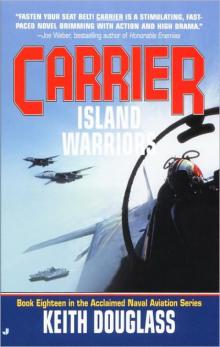 Island Warriors c-18
Island Warriors c-18 Afterburn c-7
Afterburn c-7 Terror At Dawn c-21
Terror At Dawn c-21 Specter sts-2
Specter sts-2 Joint Operations c-16
Joint Operations c-16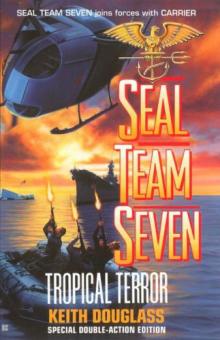 Tropical Terror sts-12
Tropical Terror sts-12 Seal Team Seven 7 - Deathrace
Seal Team Seven 7 - Deathrace Counterfire sts-16
Counterfire sts-16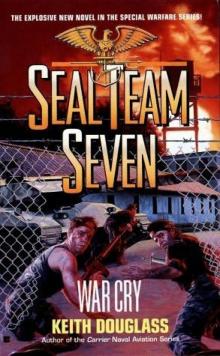 War Cry sts-9
War Cry sts-9 Chain of Command c-12
Chain of Command c-12 Brink of War c-13
Brink of War c-13 Armageddon Mode c-3
Armageddon Mode c-3 Arsenal c-10
Arsenal c-10 Nucflash sts-3
Nucflash sts-3 Arctic Fire c-9
Arctic Fire c-9 Firestorm sts-5
Firestorm sts-5 Typhoon Season c-14
Typhoon Season c-14 Alpha Strike c-8
Alpha Strike c-8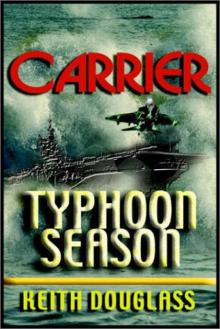 Carrier 14 - TYPHOON SEASON
Carrier 14 - TYPHOON SEASON Bloodstorm sts-13
Bloodstorm sts-13 Ambush sts-15
Ambush sts-15 First Strike c-19
First Strike c-19 Flame Out c-4
Flame Out c-4 Enemies c-15
Enemies c-15 Seal Team Seven 04 - Direct Action
Seal Team Seven 04 - Direct Action Seal Team Seven 01 - Seal Team Seven
Seal Team Seven 01 - Seal Team Seven Payback sts-17
Payback sts-17 Death Blow sts-14
Death Blow sts-14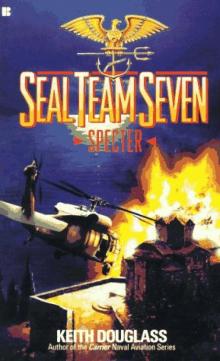 Seal Team Seven 02 - Spector
Seal Team Seven 02 - Spector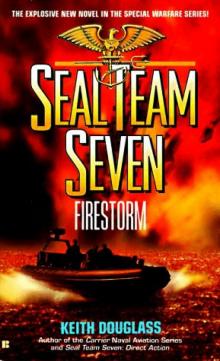 Seal Team Seven 5 - Firestorm
Seal Team Seven 5 - Firestorm The Art of War c-17
The Art of War c-17 Flashpoint sts-11
Flashpoint sts-11 Carrier - Joint Operation Book 16
Carrier - Joint Operation Book 16 Frontal Assault sts-10
Frontal Assault sts-10 Battleground sts-6
Battleground sts-6 Direct Action sts-4
Direct Action sts-4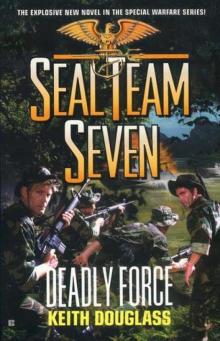 Deadly Force sts-18
Deadly Force sts-18 Carrier 13 - Brink of War
Carrier 13 - Brink of War Pacific Siege sts-8
Pacific Siege sts-8 Deathrace sts-7
Deathrace sts-7